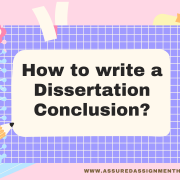Your assignment
Investigate one of the client briefs posted on Blackboard and produce a consultancy report. Collectively, this assessment is designed for you to demonstrate fulfilment of the module’s intended learning outcomes by problem-solving a real-world business case and generate solutions that show information-handling, originality, strategic application, and contextual awareness, meeting client needs.
Structure and Content
The following four steps in case study analysis should be written in its own sub-section. It is advised (but not required) that each sub-section should be roughly 750 words. The four expected sections are:
1. Situation Analysis
2. Problem Definition
3. Potential Solutions
4. Recommendations
Guidance on the specific contents and how to write each section is included in detail below and within your Consultancy Challenge Module Handbook. These issues will be expanded upon during the lectures and seminars. Each section must cover, at the appropriate level of analysis, your chosen live business problem. You must address ONE client brief only and not a mixture of various problems for different levels of analysis. All sections must draw upon credible sources of evidence – this typically means academic research, consultancy reports or quality journalism. Your report must be referenced according to the usual academic conventions i.e., using a clear and consistent referencing style.
Further Guidance
Getting Started
First, review the client briefs on Blackboard relating to their business problems and obtain a sense for the single case that appeals to you most. Afterwards, review the guidance on writing your report contained in the module handbook. Then, commence planning each section of your report by determining and acquiring the specific sources of evidence that you will require to produce the relevant analysis for each given section of your consultancy report.
Executive Summary (No more than 400 words. Not included in word count): The executive summary must cover what is included in the entire document, so that busy executives can understand the purpose and results without having to read the report from start to finish. This should contain a summary of (i) The brief addressed, (ii) main points from the situation analysis, (iii) main points from the problem definition, (iv) summary of potential solutions, (v) summary of main recommendations. Remember to be specific and quantify where possible (e.g., HSBC bank was identified as the main competitor with a 60% share of the market (Banking monthly, 2020); 3 recommendations were made which focused on
outsourcing the manufacturing process, using PETG plastic to reduce costs by 30% compared to ABS, and bidding on a specific NHS contract to increase market share by 3% in the next 3 years).
Situation Analysis (approx. 750 words): A comprehensive application of carefully chosen strategic models to highlight subtle features of the client’s organisation. Modelling assumptions are thoroughly justified. Findings are reported in a nuanced commentary style that demonstrates astute understanding of the specific nature of the organisation and its environment. Most analytic points are firmly grounded and substantiated with carefully researched sources.
Problem Definition (approx. 750 words): A sophisticated evaluation of the challenges faced on multiple levels, and how they contribute to overall problem/s. Any issues that are local to the organisation are assessed in light of the broader commercial and historical context by referring to rich and reliable sources. The discussion critically demystifies latent or implicit factors to demonstrate a deep engagement with the client’s brief.
Potential Solutions (approx. 750 words): A rich variety of viable solutions are explained that sensitively provides varying degrees of risk from cautious to ambitious. Solutions are multi-dimensional insofar as they show consideration of a range of variables including timescale, resources, culture and values etc. Sources are carefully utilised to forecast the solution’s intended outcomes. At least one potential solution demonstrates utter flair for creativity and originality in problem-solving.
Recommendations (approx. 750 words): Achieves a compelling future-oriented evaluation of possible action that serves your client with essential insights for strategy development. Builds on the major findings from previous sections to outline a coherent, comprehensive and convincing plan of action that is tailored to the organisation’s needs and strategic vision. Recommendations are systematic insofar as the sequencing, delegation and resourcing of tasks are detailed. Recommendations are holistic insofar as they reflect the relationship between internal constraints and external demands.
Use of appendices
You are advised to be cautious when including appendices in this assignment. There are no specific criteria for marking or mark allocation available for appendices, so the assessment process focuses on the appropriate use of appendices. When deciding whether or not to include other appendices, consider the following points:
Appendices should add value or detail to the discussion and analysis undertaken in the main body of the assignment.
They offer students the opportunity to give greater relevant and appropriate detail to support the main analysis and discussion.
Models, theory and discussion that demonstrate critical evaluation and analysis of issues related to the module being assessed should always be presented within the main body of the text. This discussion should make sense without referring to the appendices.
Using bullet points in the text (which does not constitute analysis) and putting the detailed analysis in the appendices is not acceptable practice and could result in failure.
The inclusion of appendices should not be viewed as an opportunity to include anything that cannot fit in the word count.
Assignments that make excessive use of appendices suggest inappropriate use. As a guide, we would not normally expect appendices to exceed one third of the length of the assignment.
Appendices should always be referenced at the appropriate point within the discussion in the main body of the text.











